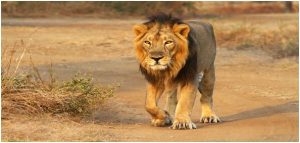RED DATA BOOK- CONSERVATION CATEGORY
INTRODUCTION
- Red Data Book provides scientifically based information on the status of species and sub-species at a global level.
- It is designed to draw attention to the magnitude and importance of threatened biodiversity, to influence national and international policy and decision-making, and to provide information to guide actions to conserve biological diversity (IUCN 1996).
- The main purpose of this book or data is to convey the urgency of conservation issues to the public and policy makers, as well as help the international community to try to reduce species extinction.
IMPORTANT POINTS
- The International Union for Conservation of Nature(IUCN) Red List of Threatened Species or Red Data List, founded in 1964. It’s headquarter is situated at Gland, Switzerland.
- It is the world’s most comprehensive inventory of the global conservation status of biological species. And it is the premier coordinating body for international conservation efforts.
- It is designed with a set of criteria to evaluate the extinction risk of thousands of species and subspecies. These criteria are relevant to all species and all regions of the world. With its strong scientific base, the IUCN Red List is recognized as the most authoritative guide to the status of biological diversity.
- The number of species in Red List has been increasing over time. As of 2019, out of 105,000 species surveyed, 28,338 are considered at risk of extinction due to human activity particularly over fishing, hunting and land development.
CATEGORIES
According to IUCN (1988), to highlight the legal status of rare species for the conservation purpose, there were five main conservation categories.
Later species are classified by the IUCN Red List into nine groups specified through criteria such as rate of decline, population size, area of geographic distribution, and degree of population and distribution fragmentation are as follows:
- Extinct- when the last surviving individual has died.
- Extinct in the wild- when exhaustive surveys are failed to record such species in wild.
- Critically endangered- in a particularly and extremely critical state.
- Endangered- such species are facing a very high risk of extinction in the wild in the near future.
- Vulnerable species- such species are facing a high risk of extinction in the wild in the medium term future.
- Rare species- means such species has only small total number of individuals.
- Insufficiently known species
- Data deficient
- Not evaluated
INDIA
In 1969, in the meeting of the IUCN, the problems on threatened plants were discussed first time. Later, in 1980, “Threatened plants of India- A state of the art report” booklet was published by Botanical survey of India (BSI).
In 1984, BSI published a book named the Indian plant red data book-1. Further volume 2 was also edited in 1988 by BSI. IUCN Red List India (As of March 2019)


- Himalayan Brown/Red Bear (Ursus arctos isabellinus)
- Pygmy Hog (Porcula salvania)
- Andaman White-toothed Shrew (Crocidura andamanensis)
- Kondana Rat (Millardia kondana)
- Large Rock Rat or Elvira Rat (Cremnomys elvira)
- Namdapha Flying Squirrel (Biswamoyopterus biswasi)
- Malabar Civet (Viverra civettina)
- Sumatran Rhinoceros (Dicerorhinus sumatrensis)
- Kashmir stag/hangul (Cervus elaphus hanglu)
- Endangered Mammals
- Tigers (including Bengal Tiger)
- Asiatic Lion (Included Gir Lions)
- Red Panda
- Dhole/Asiatic wild dog or Indian wild dog (Cuon alpinus)
- Eld’s deer/thamin or brow-antlered deer (Panolia eldii)
- Golden langur (Trachypithecus geei)
- Himalayan / White-bellied Musk Deer
- Hispid hare/ Assam rabbit (Caprolagus hispidus)
- Hog deer
- Lion-tailed macaque/ wanderoo (Macaca silenus)
- Nilgiri tahr
- Kharai Camel – India’s swimming camels
Read more..
WHAT BIODIVERSITY IS-MEANING,TYPES&THREATS
IMPORTANCE OF BIODIVERSITY
BIODIVERSITY HOTSPOTS IN INDIA
TYPES OF THE ECOSYSTEM
ENERGY FLOW OF ECOSYSTEM
HYDROLOGIC CYCLE-OVERVIEW & PROCESSES
WHAT IS ECOLOGY- OVERVIEW & TYPES
ECOLOGICAL PYRAMID- DEFINITION & TYPES